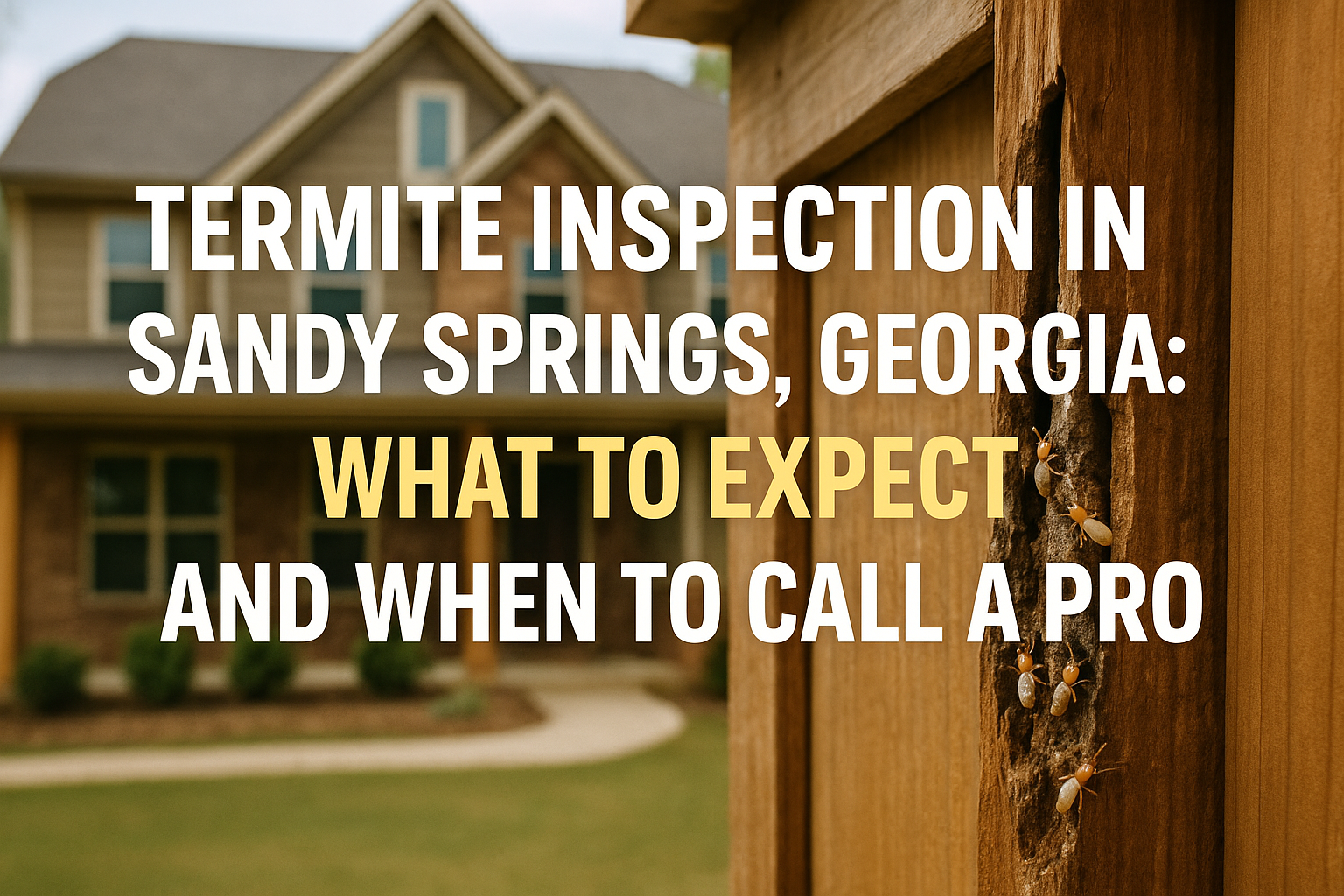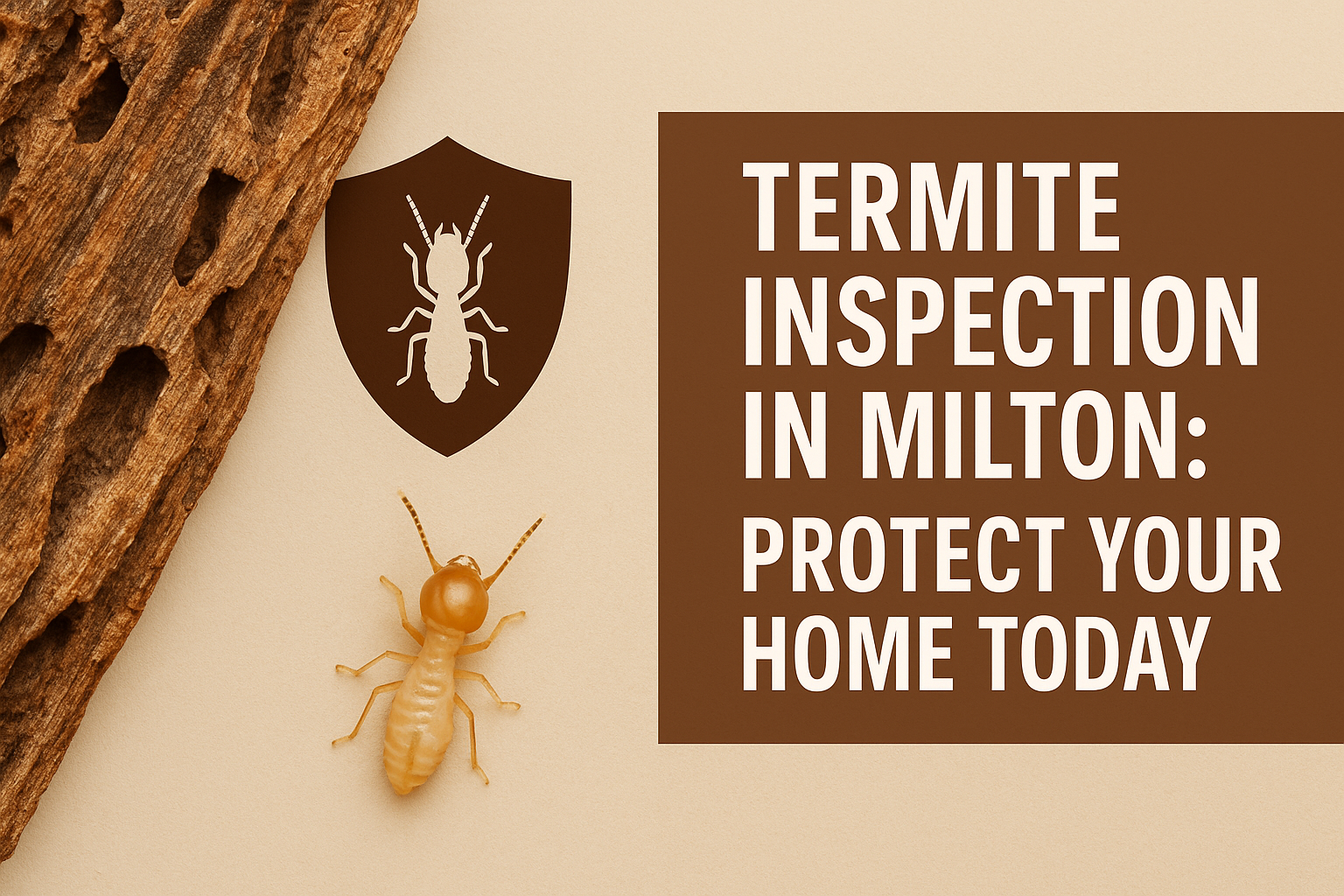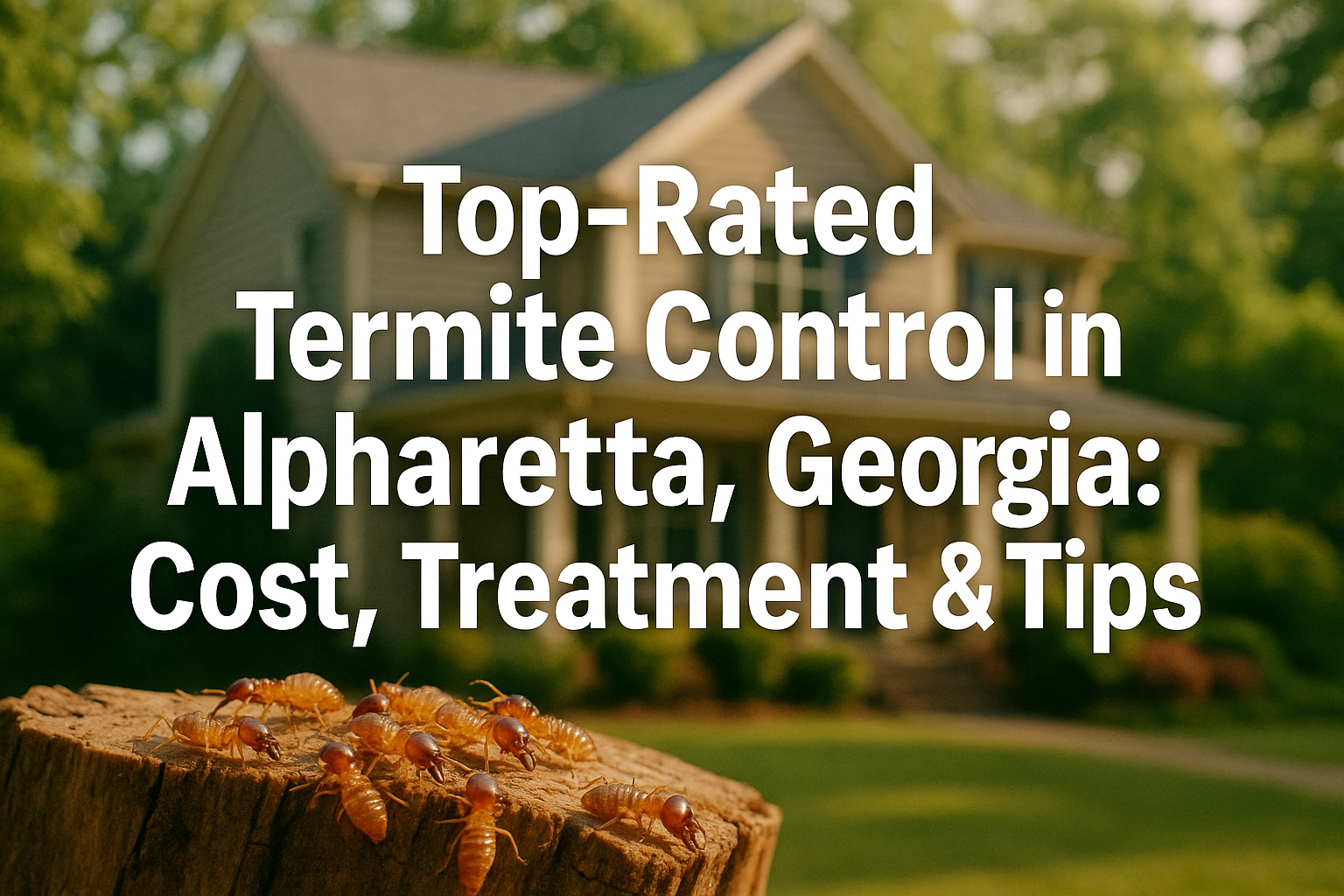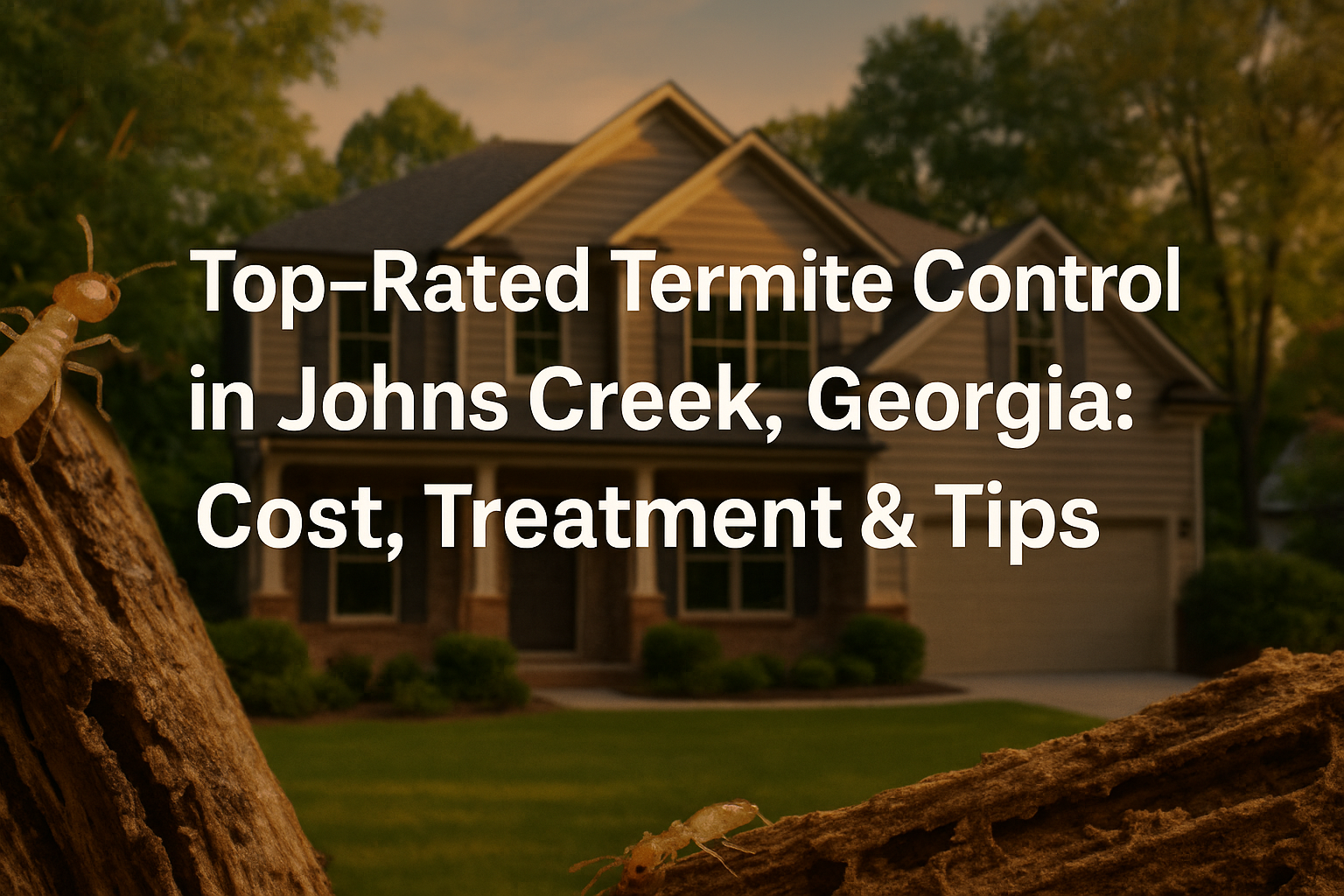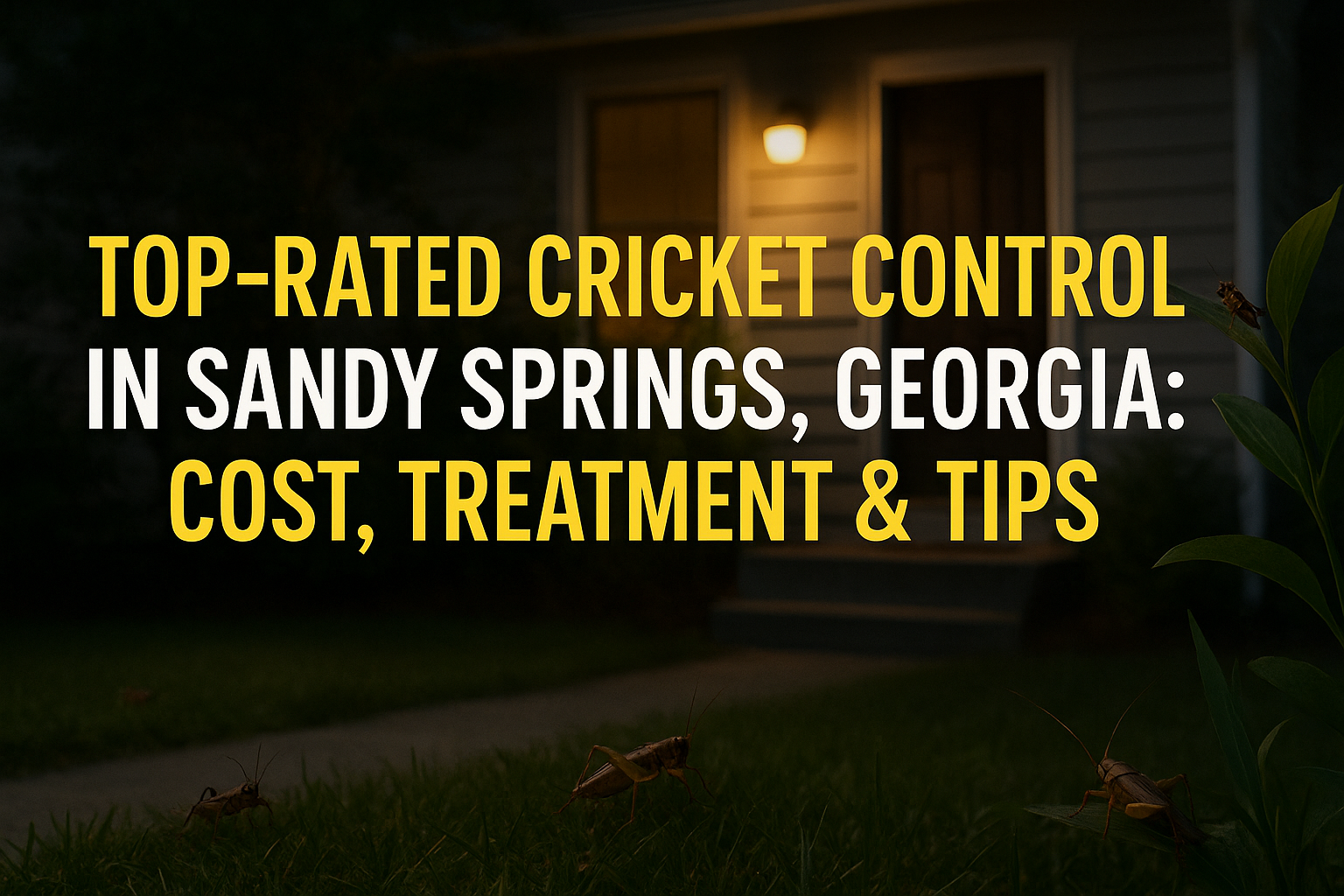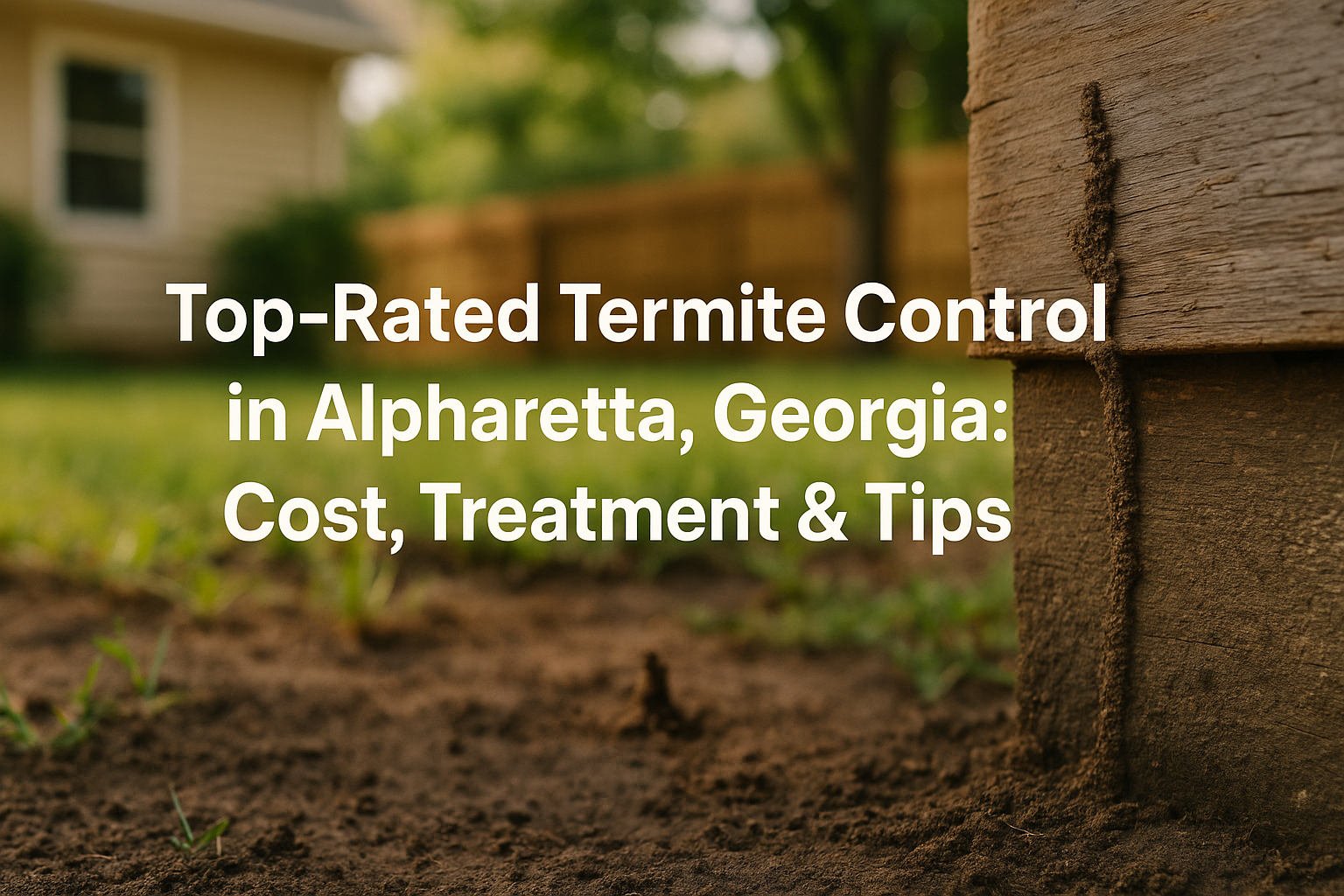Termites in Sandy Springs: Why Inspections Aren’t Optional
If you own a home in Sandy Springs, you know how quickly Georgia’s humidity can turn minor maintenance into major headaches. Termites love it here just as much as we do, and that means your home is always on their radar—especially with our unique mix of historic charmers and brand-new builds. It’s easy to assume you’ll spot an infestation, but here’s the catch: termites are sneaky. By the time you see the signs, the damage could already cost you thousands—making a termite inspection Sandy Springs essential for early detection and protection.
Every year, homeowners across the country shell out millions for termite repairs, but Sandy Springs sits in the hot zone. Warm, damp weather is their paradise. Local residents often find themselves blindsided by hidden colonies chewing away under floors or behind walls for months before anyone notices. Trust us—waiting until “something feels off” is a gamble you don’t want to take with your biggest investment.
The solution? A professional termite inspection. For most homes around Sandy Springs, an inspection typically runs between $85 and $200. Larger or more unique properties may push the high end, but those upfront costs are a fraction of what unexpected repairs might set you back. Spotting an infestation early makes all the difference, letting you handle trouble before it gets expensive or complicated.
Whether you’re buying, selling, or just wanting peace of mind in your forever home, staying proactive pays off. Stick with us as we dive deeper—with the next sections breaking down your inspection options, giving you a clear look at what goes into the costs, and offering expert prevention tips specific to Sandy Springs.
Your home deserves the best protection. Ready to get ahead of the problem before it starts? Let’s explore smart ways to keep termites far from your doorstep.
What Impacts the Price of Termite Service in Sandy Springs?
When you’re budgeting for termite inspection Sandy Springs or treatment, the numbers aren’t plucked out of thin air. A few key factors drive what you’ll pay here in Sandy Springs—and knowing them can help you get more value for your dollar while making sure your home is protected.
- Size of Property: Quite simply, bigger homes or buildings take more time and supplies to inspect and treat. A 2,500-square-foot home might be quick work compared to an old Sandy Springs mansion or sprawling office plaza. The bigger the square footage, the more labor and products needed, which means a higher price tag.
- Severity and History of Infestation: If termites have been left to party undisturbed for a while, reversing the damage and kicking them out is a bigger job. Heavy, long-standing infestations often need multiple visits, specialized technology, and repeated follow-up—and that’s going to show up in the bill. Early-stage infestations are easier and less expensive to tackle.
- Inspection and Treatment Methods: Not every inspection looks the same. Some are classic walk-throughs; others use infrared or moisture-detection tech. Similarly, treatment options range from simple liquid barriers to bait systems or multi-step plans. Technology-assisted methods or high-end baiting systems tend to cost more but can also be more precise, especially for stubborn infestations.
- Neighborhood and Property Access: Where you live can nudge costs up or down. Densely packed neighborhoods like Riverside, Chastain Park, or Dunwoody might see slightly higher prices due to increased risk, limited access for equipment, or tougher logistics for larger homes close together.
To give you some ballpark figures for termite inspection Sandy Springs, costs usually run from $85 to $200. If treatment is necessary, expect to see a range—most jobs fall somewhere between $800 and $3,200. The final tally depends on your specific situation: the size of your place, the chosen treatment method, and how much ground termites have gained.
Before you commit, be sure to talk through these factors with your provider. Reviewing everything upfront—scope, methods, access, and follow-ups—helps you get a solution that fits both your needs and your budget, while making sure those pesky termites don’t stand a chance.
What Impacts the Price of Termite Service in Sandy Springs?
When you’re budgeting for termite inspection Sandy Springs or treatment, the numbers aren’t plucked out of thin air. A few key factors drive what you’ll pay here in Sandy Springs—and knowing them can help you get more value for your dollar while making sure your home is protected.
- Size of Property: Quite simply, bigger homes or buildings take more time and supplies to inspect and treat. A 2,500-square-foot home might be quick work compared to an old Sandy Springs mansion or sprawling office plaza. The bigger the square footage, the more labor and products needed, which means a higher price tag.
- Severity and History of Infestation: If termites have been left to party undisturbed for a while, reversing the damage and kicking them out is a bigger job. Heavy, long-standing infestations often need multiple visits, specialized technology, and repeated follow-up—and that’s going to show up in the bill. Early-stage infestations are easier and less expensive to tackle.
- Inspection and Treatment Methods: Not every inspection looks the same. Some are classic walk-throughs; others use infrared or moisture-detection tech. Similarly, treatment options range from simple liquid barriers to bait systems or multi-step plans. Technology-assisted methods or high-end baiting systems tend to cost more but can also be more precise, especially for stubborn infestations.
- Neighborhood and Property Access: Where you live can nudge costs up or down. Densely packed neighborhoods like Riverside, Chastain Park, or Dunwoody might see slightly higher prices due to increased risk, limited access for equipment, or tougher logistics for larger homes close together.
To give you some ballpark figures for termite inspection Sandy Springs, prices usually run from $85 to $200. If treatment is necessary, expect to see a range—most jobs fall somewhere between $800 and $3,200. The final tally depends on your specific situation: the size of your place, the chosen treatment method, and how much ground termites have gained.
Before you commit, be sure to talk through these factors with your provider. Reviewing everything upfront—scope, methods, access, and follow-ups—helps you get a solution that fits both your needs and your budget, while making sure those pesky termites don’t stand a chance.
Why Sandy Springs Homes Are Especially Prone to Termite Issues
If you own a home in Sandy Springs, you already know our summers are muggy and the rainfall seems to never let up. All that moisture—combined with our warm temperatures—creates the perfect storm for termites to thrive. When the ground is damp and the air is humid, termites get an open invitation to dig in and start doing what they do best: finding ways into your house and feeding on any wood they can find.
The age and style of your home also play a big role. A lot of properties here—especially in places like Glenridge, North Springs, or Powers Ferry—feature older construction methods, crawl spaces, basements, and original wood framing. All those nooks and crannies make it easy for termites to sneak in unnoticed. Even if you live in a newer place built with treated lumber or concrete slabs, you’re not totally in the clear. Termites can still make their way in if there’s enough moisture and an easy path from the soil to your foundation.
Let’s talk about your yard for a minute. Dense shrubs or landscaping pressed right up against your house may look great, but they lock in moisture near the foundation and give termites another way to hide. Our area’s frequent downpours only feed the problem, saturating the soil and making that soft wood even tastier for termites.
Here’s what this all boils down to: Every home is a little different, and the features that make your place unique—historic charm, lush gardens, the layout of your crawlspace—can also make termite inspections and treatments more complicated. The more complex the environment, the more detailed the work, and that affects both the timeline and the price tag for termite prevention or removal.
- Historical homes often need more extensive inspections and custom solutions because of older wood and unusual layouts.
- Homes with dense vegetation or poorly graded soil are at higher risk for infestations and usually require extra attention during treatment.
- Rain-soaked properties may drive up the frequency and urgency of both inspections and ongoing protection.
When you’re deciding on termite treatment in Sandy Springs, just remember: the details of your home and its environment aren’t just small things—they make all the difference in how termites get in, how we get them out, and what it’ll take to keep your house protected for the long run.
Simple Steps to Keep Termites from Ruining Your Home
If you want to keep termites from creating expensive problems down the road, a few regular habits can really pay off. Here’s what works, especially for folks around Sandy Springs:
- Clear out anything wood-based like logs, firewood piles, or leftover construction debris from your foundation. Mulch is handy for your garden, but keep it away from your exterior walls.
- Water is a termite magnet, so check for leaks around your pipes, outdoor spigots, and especially those sneaky gutters. Make sure your gutters move water away from your house, not toward it.
- Patch up cracks and openings in your siding, trim, and even around your roofline. After storms roll through, take a quick look outside to see if anything new needs sealing up—termites love an easy entry.
- Put annual termite inspections on your calendar, ideally in early spring. This is when those pests get active. If you live in an area like Mount Vernon Woods or The Branches, where termites are spotted more often, think about scheduling checks more regularly.
- Keep bushes and trees trimmed back from your exterior so there are no branches or leaves touching the house. It’s a simple move that limits their access points.
- Keep things dry and make sure soil isn’t sloping toward your foundation. Bonus: This also helps avoid other moisture problems down the line.
Teaming these simple routines with regular professional inspections gives you the best shot at stopping termites before they take a bite out of your budget. If you want extra peace of mind, ask about advanced monitoring or preventive treatments—especially if your property’s already on their radar. A little prevention now means way fewer headaches and costs later.
When Should You Schedule a Termite Inspection in Sandy Springs?
Timing really does matter when you’re dealing with termites in Sandy Springs. If you want to stay ahead of these pests, mark your calendar for late February through May—this is when subterranean termites start swarming all over our local neighborhoods, from Sandy Springs ITP to Spalding Lake. Catching termite activity in early spring isn’t just smart, it can save you big—homeowners who book inspections and treatments at this time get the quickest detection and can avoid those higher remediation bills down the road.
This peak season means everybody’s looking for help at the same time. Service calls spike, and so do prices, so booking your termite inspection Sandy Springs in advance is a no-brainer. Even if you’re not seeing swarms, the fact that Sandy Springs stays under high termite pressure year-round means you can’t put this off—termites aren’t taking a break, even if you are.
If you’re thinking about selling or buying a home, don’t forget that pre-listing or pre-purchase termite inspections are always required. This isn’t just a seasonal issue—it’s a must, no matter the time of year. For everyone else, that annual inspection should be locked in, especially after a stretch of heavy rain (which termites love) or if you’ve got a lot of wood-heavy landscaping or older trees close to the house.
The bottom line? Waiting too long could mean a bigger headache—and a bigger bill. For the best protection, get an inspection on the calendar before spring hits. You’ll keep your home solid, your wallet happier, and get real peace of mind knowing termites won’t catch you off guard.
Don’t Wait Until Termites Take Over—Get Help Now
When it comes to termites, waiting is never your friend. Why put your home—and your peace of mind—at risk when expert help is just a phone call away? The Anthem Pest team lives and works right here in Sandy Springs. We know the neighborhoods, we understand what local homes need, and we’re ready to put our experience to work protecting your biggest investment.
Give us a shout at 877-3718-5196 or reach out for your free, no-obligation property assessment. You’ll get a certified pro at your door—someone who’ll look you in the eye, give you honest answers, and walk you through a treatment plan customized for your home. No pushy sales tactics, no hidden fees—just up-front pricing, real solutions, and a guarantee you can count on.
Your home, your family, and your wallet deserve protection from expensive termite damage. Let Anthem Pest make it easy for you. Call today and find out why your Sandy Springs neighbors trust us to get the job done right, every time.
Top Questions from Sandy Springs Homeowners About Termite Inspections and Treatments
Let’s face it—when it comes to termite problems in Sandy Springs, everyone has questions, and you should. Here are some of the most common things neighbors ask us about termite inspections and termite treatments, answered in plain English.
How often should I get a termite inspection?
Honestly, every year. Sandy Springs has a long growing season and pesky termite hotspots, so schedule a professional inspection annually—especially if your home is older, has a crawlspace, or you’re dealing with real estate paperwork. If you’re buying or selling a house, you’ll need an inspection and an official report anyway.
What should I look for—are there warning signs of termites?
Keep your eyes peeled for:
- Mud tubes along your foundation or inside the garage
- Wood that sounds hollow when you tap it
- Little piles of wings by windows or doors
- Small piles of sawdust-looking “frass” (termite droppings)
If you see any of these, don’t wait—those bugs work fast in our warm climate.
How long does a professional termite inspection take?
Most jobs take between 45 minutes and an hour and a half. Big homes, crawlspaces, and finished basements might push that higher. We check inside, outside, and even up in the attic if needed. We aim to be thorough, not rushed.
What happens if termites are found?
No need to panic—this isn’t our first rodeo. Anthem Pest will walk you through a custom plan that fits your home and your situation, whether that’s a liquid barrier, bait stations, or both. We’ll go over exact pricing and spell out all the details, including warranties, so there are zero surprises.
Is termite treatment safe for my family and pets?
When a licensed professional uses today’s technology and follows EPA guidelines, treatments are made with family safety in mind. Once we’re on the job, you can trust that your kids and pets won’t be at risk.
What’s the difference between a termite letter and an inspection report?
In Georgia, they’re one and the same: the Georgia Wood Infestation Report. If you’re refinancing, buying, or selling a house, you’ll need this official document. We handle it all in one visit.
Can I protect my home against termites myself?
You can do a few things, like fixing leaks, keeping mulch away from the foundation, and repairing damaged wood. But honestly, total protection takes a pro’s eyes and regular professional monitoring. DIY is no match for a hungry colony in Sandy Springs.
Are certain Sandy Springs neighborhoods at higher risk?
Yes—older spots like Riverside, Glenridge, and Mount Vernon Woods tend to see more activity, and any area with heavy woods or lush landscaping can attract termites. If your home is wood-frame construction or has moisture issues, you’ll want to be extra vigilant.
Still have questions? Give Anthem Pest a shout and let’s chat. We know Sandy Springs, we know termites, and we’ve got your back.

